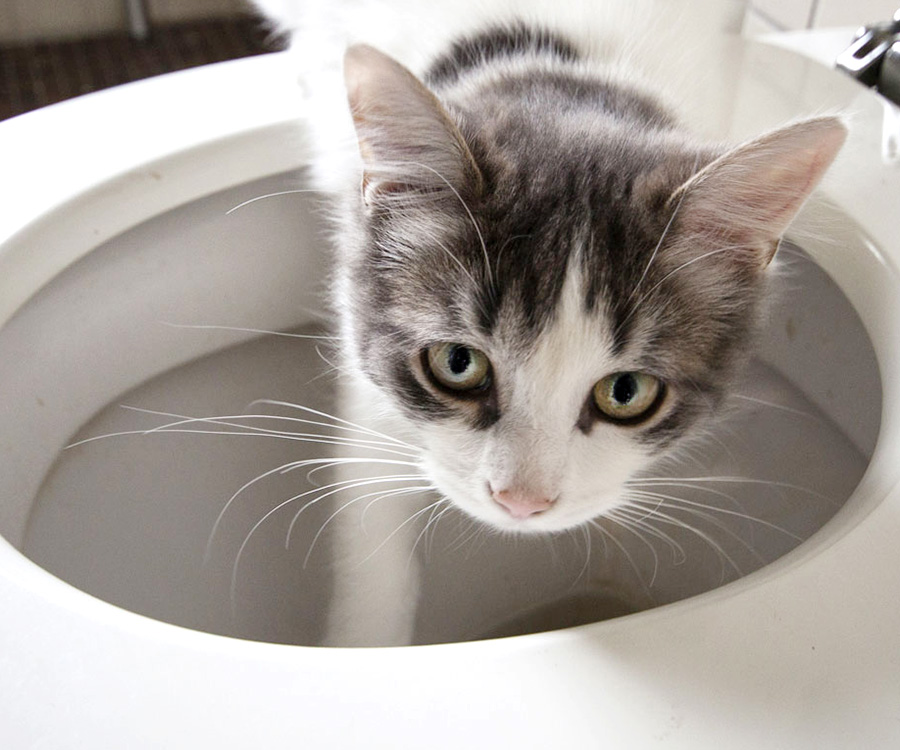Prevent Plumbing Problems: Never Flush Cat Poop Down Your Toilet - Professional Guidance
Prevent Plumbing Problems: Never Flush Cat Poop Down Your Toilet - Professional Guidance
Blog Article
The publisher is making several good observations about Don’t flush cat feces down the toilet overall in this article directly below.

Introduction
As pet cat owners, it's vital to bear in mind exactly how we get rid of our feline good friends' waste. While it may appear hassle-free to flush pet cat poop down the commode, this method can have detrimental effects for both the setting and human health and wellness.
Ecological Impact
Purging cat poop introduces hazardous microorganisms and parasites into the water system, positioning a significant risk to aquatic ecosystems. These contaminants can negatively affect marine life and compromise water quality.
Health and wellness Risks
In addition to ecological problems, flushing cat waste can also pose wellness threats to people. Pet cat feces might consist of Toxoplasma gondii, a parasite that can cause toxoplasmosis-- a potentially serious disease, particularly for pregnant females and people with damaged body immune systems.
Alternatives to Flushing
Thankfully, there are safer and more liable ways to dispose of cat poop. Take into consideration the adhering to alternatives:
1. Scoop and Dispose in Trash
One of the most usual approach of disposing of feline poop is to scoop it into a biodegradable bag and toss it in the garbage. Make sure to use a specialized trash scoop and take care of the waste without delay.
2. Usage Biodegradable Litter
Choose eco-friendly feline litter made from materials such as corn or wheat. These clutters are environmentally friendly and can be securely thrown away in the trash.
3. Hide in the Yard
If you have a yard, take into consideration burying pet cat waste in a marked area far from veggie yards and water sources. Make certain to dig deep sufficient to prevent contamination of groundwater.
4. Set Up a Pet Waste Disposal System
Invest in a pet dog waste disposal system especially designed for pet cat waste. These systems use enzymes to break down the waste, lowering odor and environmental effect.
Conclusion
Liable animal possession prolongs beyond supplying food and shelter-- it likewise involves appropriate waste monitoring. By refraining from purging cat poop down the toilet and choosing alternative disposal techniques, we can reduce our ecological footprint and protect human health and wellness.
Why You Should NEVER Flush Cat Poop (and/or Litter) Down Your Toilet
The Problem with Litter
The main function of litter is to solidify and adhere to your cat’s waste. While this makes litter excellent for collecting cat poop and urine, it’s also the exact property that makes it a nightmare when flushed down the toilet.
Cat litter can and will clog pipes. There is non-clumping litter, but it’s still quite heavy and can build up in pipes. This is true even of supposed “flushable litter.”
The problems only compound when the litter is already clumped into cat waste. Toilet paper is among the more flushable things, and even too much of that will clog a toilet.
The Problem with Cat Poop
Sewers and septic systems are designed with human waste in mind. The microbes that help break down human waste don’t work on cat waste. Additionally, cat poop plays host to the parasite Toxoplasma gondii.
When flushed, this parasite can enter the environment in places it was never meant to, posing a risk to pregnant women, their unborn children, and other people with compromised immune systems. While it might not seem possible, flushing cat poop can indeed introduce this parasite to the public water supply.
These reasons are why, even if you’ve trained your cat to go on the toilet and flush, which is possible, it’s still not a good idea. Also, pregnant women and the immunocompromised shouldn’t change litter, either.
How to Handle Litter
The best way to handle litter is to simply put it in a plastic bag and place it in the trash. Avoiding environmental risks and possible plumbing damage is worth the extra effort.
You can also invest in devices that seal away your cat’s waste in a separate compartment, so you don’t have to change the litter nearly as often. They’re also safer for pet owners because they limit the possibility of Toxoplasma gondii exposure.
Disposing of litter the old-fashioned way will ensure you won’t have to worry about any issues that flushing the waste can potentially cause.
Take Care of Clogged Pipes with Stephens Plumbing, Heating & Air Conditioning
The reasons you should never flush cat poop down your toilet are numerous, but sometimes the inevitable happens despite your best efforts.
Stephens Plumbing, Heating & Air Conditioning is ready to help if you’re experiencing litter-blocked plumbing. Whether you need us in an emergency or want to schedule regular maintenance, we’re here for you.
https://www.stephensplumbing.net/bathroom-plumbing/never-flush-cat-poop-down-your-toilet/

Do you enjoy reading up on Can You Flush Cat Poo or Litter Down the Toilet?? Try leaving a remark further down. We would be delighted to listen to your ideas about this post. Hoping to see you back again later on. Enjoyed reading our piece of writing? Please share it. Help somebody else find it. I am grateful for your time. Come back soon.
Request An Estimate Report this page